The Original University City
Saturday, June 29, 2024
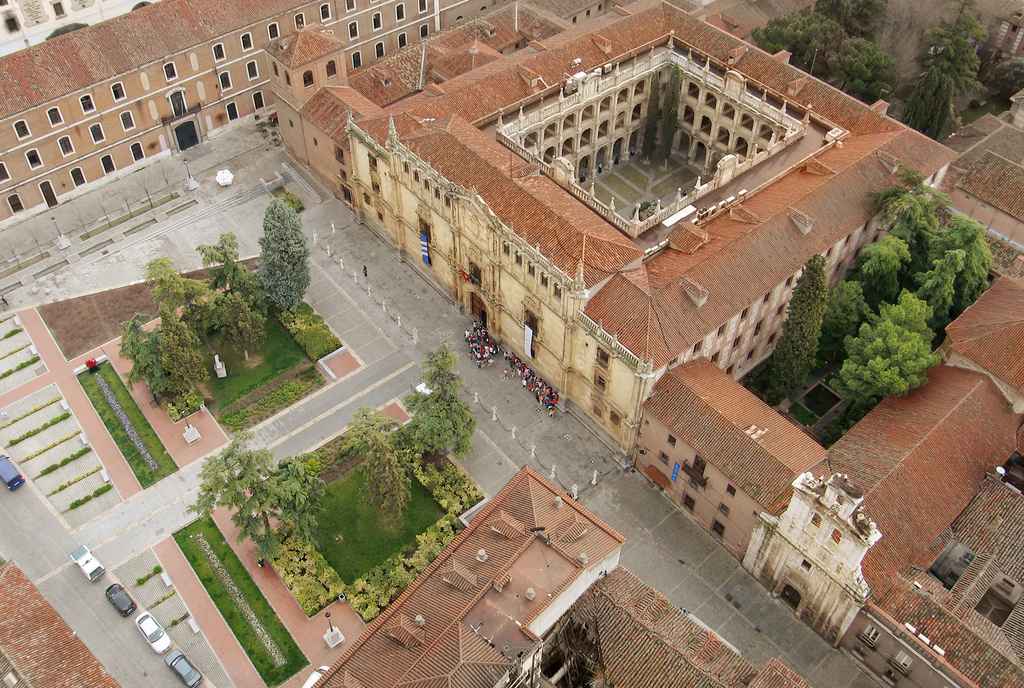
Alcalá de Henares is the city where Miguel de Cervantes was born, writer of the world-famous Don Quixote de la Mancha. Its University and historic neighbourhood are what makes this town so special. The main axis of the historic centre of Alcalá de Henares is the Calle Mayor. The birthplace of Cervantes is located on this very road, which has now been converted into a museum that recreates the atmosphere of a 16th and 17th century home. However, of all the buildings in the town, there is one that stands out in particular: the University. Founded by Cardinal Cisneros, its walls welcomed some of the greatest Spanish minds such as Lope de Vega, Calderón de la Barca and Quevedo.
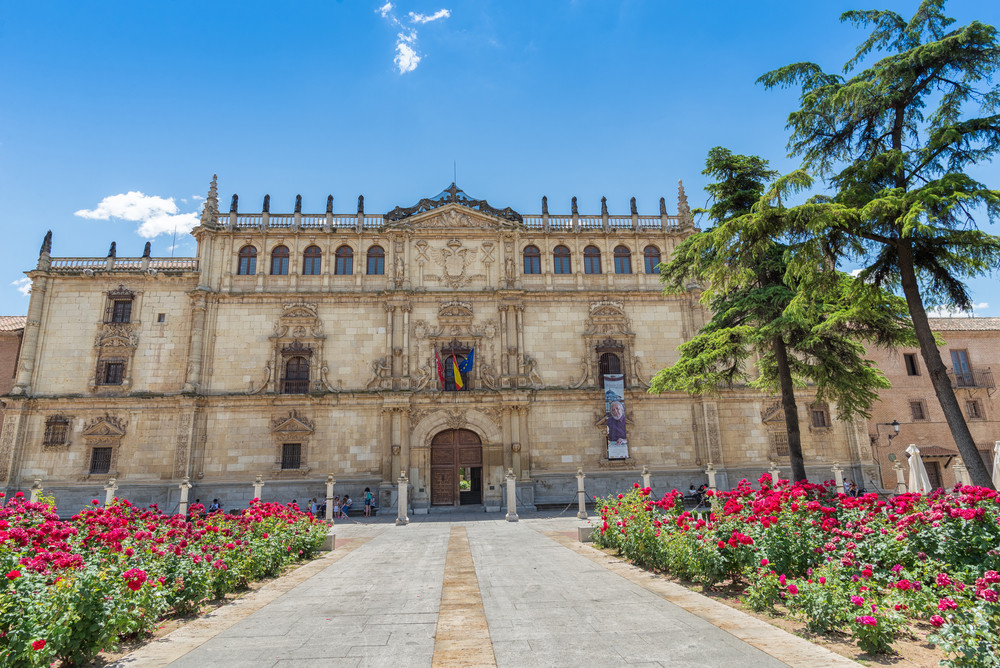
Alcala de Henares was the first university city that was specifically planned urbanistically to be so, making it unique in the world. And it was so successful that it effectively became the blueprint for other university cities around Europe and America. Cardinal Cisneros was the mind behind the planning and was the one responsible for choosing a somewhat uninhabited area in between the Plaza del Mercado and the gates of Guadalajara, to establish what would become the famous academic district in the 15th Century. The district included all the housing that was necessary for the teachers and their families and all the buildings needed to house the services and suppliers of the university, such as the printers or bookstores. This radical form of urbanism was new for the times but contributed in such a way to the development of the field of humanities that UNESCO declared Alcalá de Henares a World Heritage City in 1998.
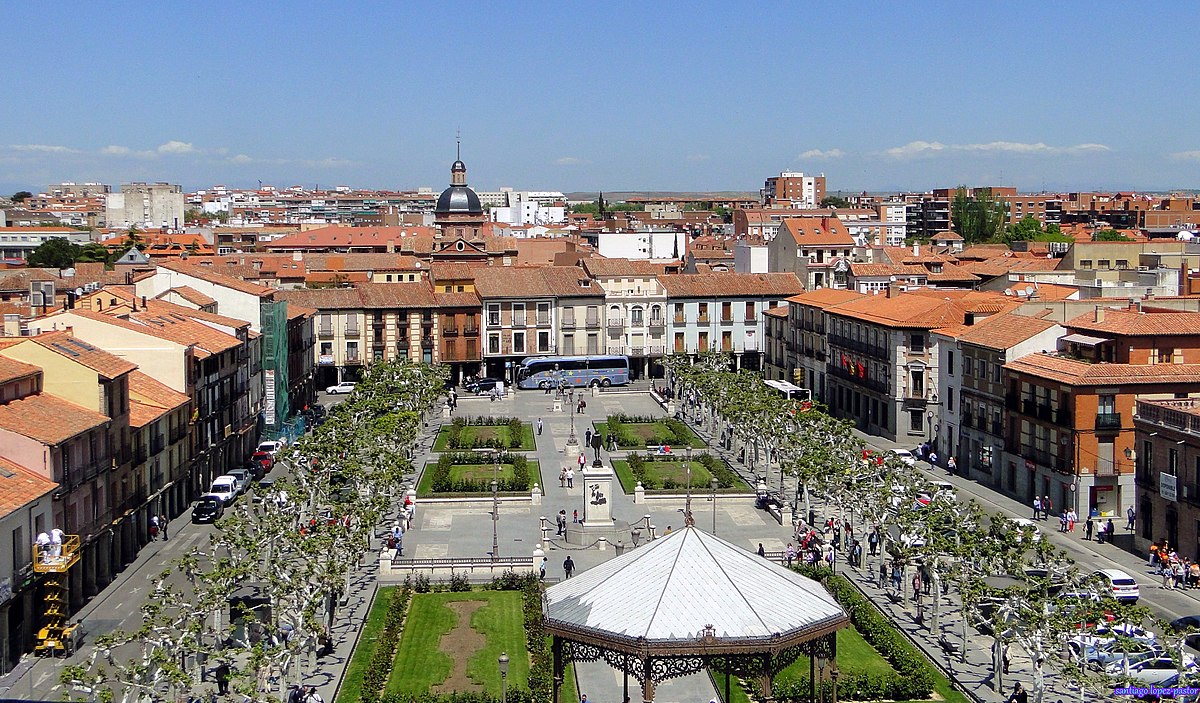
 1
Like
Published at 9:31 AM Comments (0)
1
Like
Published at 9:31 AM Comments (0)
The Best Viewpoint in Barcelona
Saturday, June 22, 2024
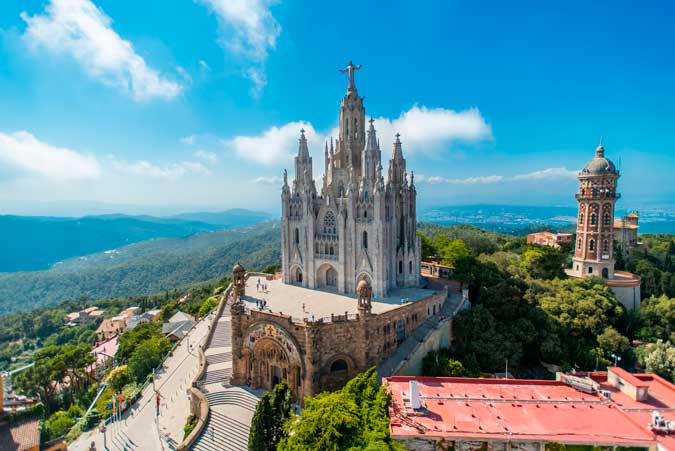
The idea of building a Catholic church on the summit of the Mount Tibidabo overlooking Barcelona emerged in the late 19th century amidst rumours about the construction of a Protestant church and a hotel-casino at that location. This motivated a "Board of Catholic Knights" to acquire the ownership of the field and give it to Saint John Bosco in 1886 when he was visiting Barcelona at the invitation of Dorotea de Chopitea, a great patron and promoter of the project.
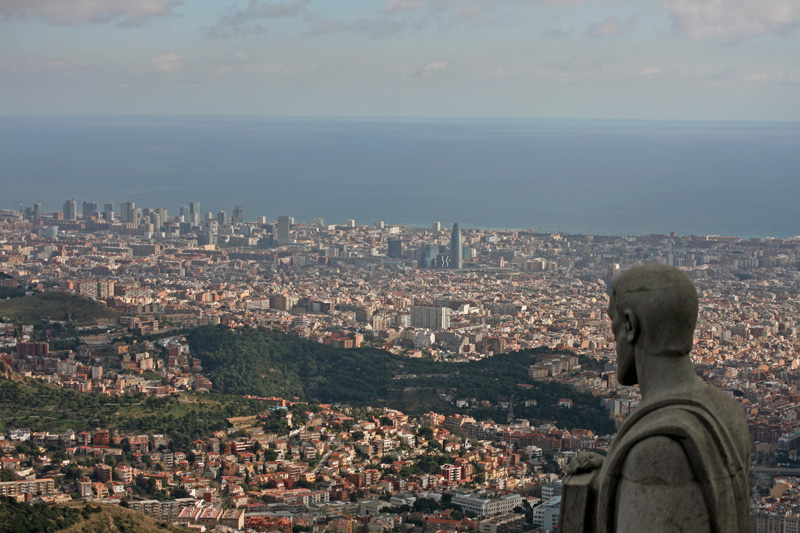
From this arose the idea of a building dedicated to the Sacred Heart of Jesus, a dedication very popular at that time thanks to the impetus given by Pope Leo XIII, and following in line with the church built in Rome by Bosco himself (Sacro Cuore di Gesù a Castro Pretorio) and the famous Sacré-Cœur in Paris.
In 1886 a neo-Gothic hermitage was built, and two years later, for the Universal Exposition, the Vallvidrera 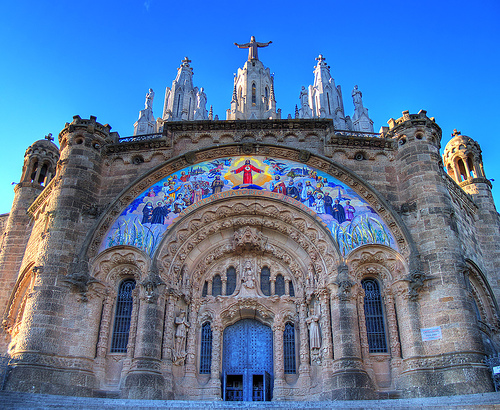 road was urbanised and a pavilion of Mudejar inspiration was built beside the hermitage to serve as a viewing point for the city below. However, the project to build the church suffered a significant delay mainly because of the development of a new project to build an astronomical observatory on the summit of Tibidabo, which was eventually constructed on a nearby hill - Fabra Observatory. road was urbanised and a pavilion of Mudejar inspiration was built beside the hermitage to serve as a viewing point for the city below. However, the project to build the church suffered a significant delay mainly because of the development of a new project to build an astronomical observatory on the summit of Tibidabo, which was eventually constructed on a nearby hill - Fabra Observatory.
Finally, on 28 December 1902, the first stone was placed in a ceremony presided by the Bishop of Barcelona, Salvador Casañas i Pagès. The crypt was built between 1903 and 1911, and the main church was built between 1915 and 1951. The church was consecrated by Bishop Gregorio Modrego Casaus during the 35th Eucharistic Congress held in Barcelona in 1952. The towers were completed afterwards, with work officially ending in 1961. On 29 October 1961, the church received the title of minor basilica from Pope John XXIII.
The external appearance of the church is of a Romanesque fortress of stone from Montjuïc (the crypt), topped by a monumental neo-Gothic church accessed by two grand outdoor stairways. The upper church has a central floor with an octagonal dome on eight columns. The dome is crowned with an image of the Sacred Heart; the original work was by Frederic Marès (destroyed in 1936) and replaced in 1950 with another by Josep Miret.
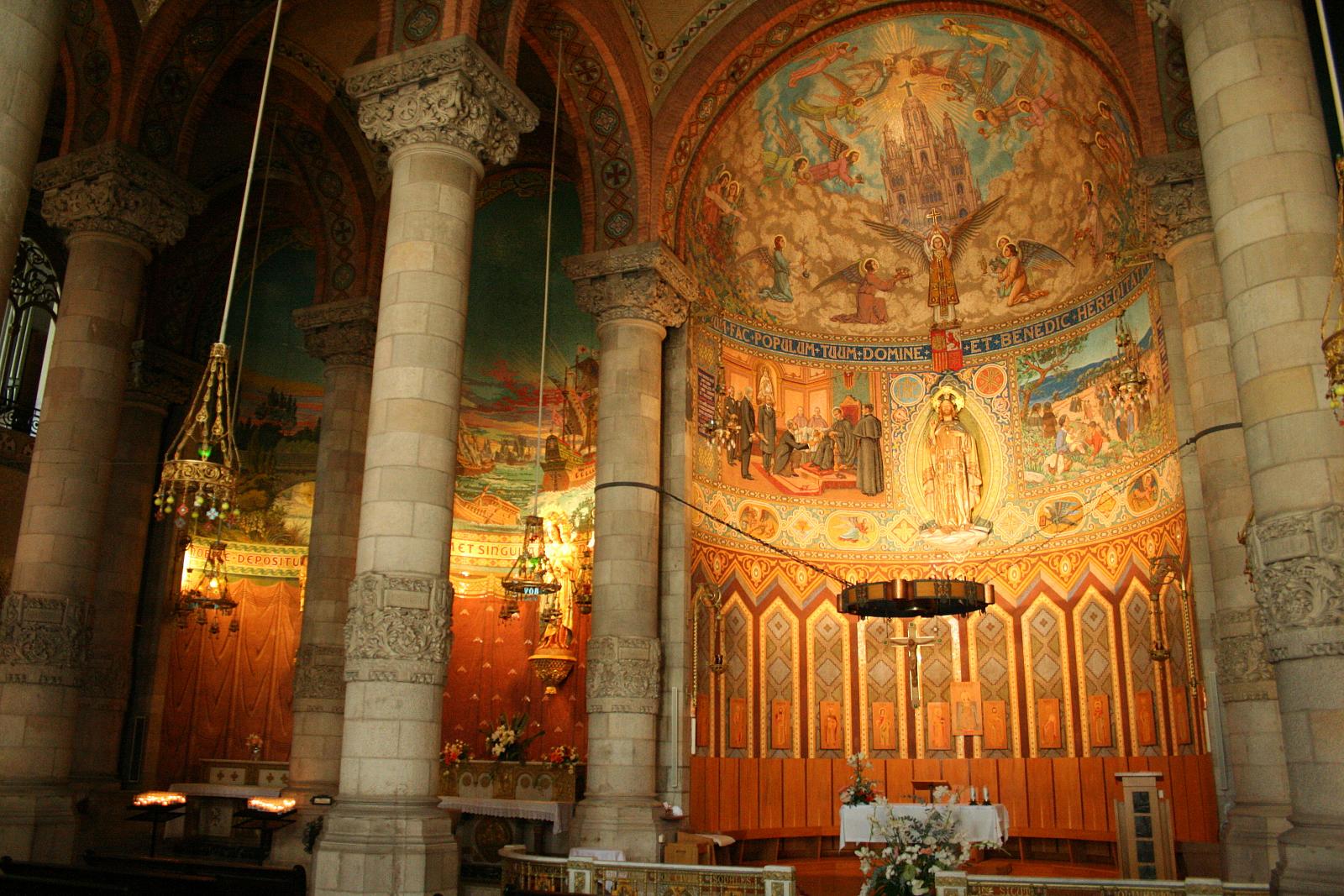
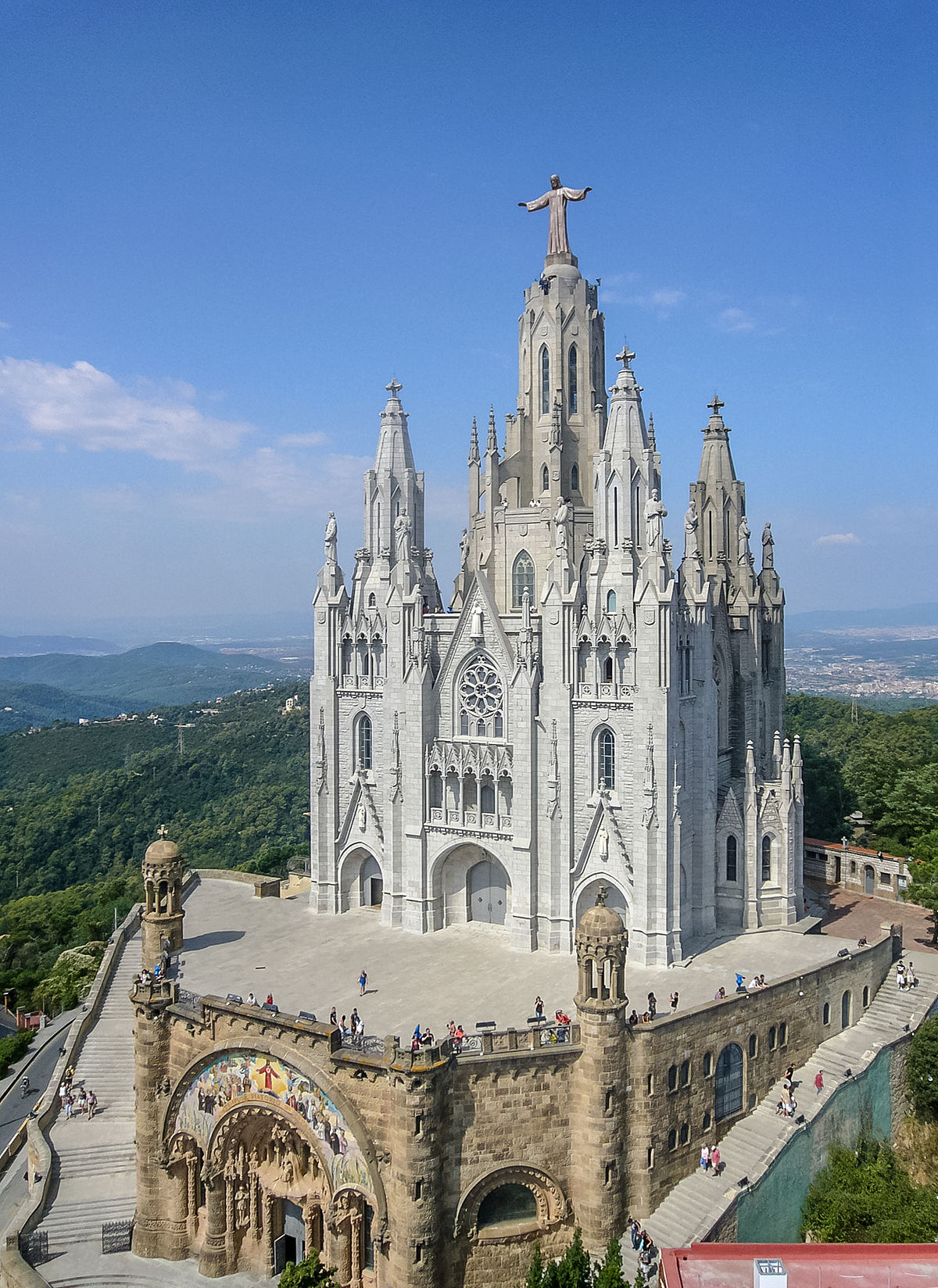
The interior is divided into a nave and two aisles with semicircular apses, with stained glasses and four rose windows on the facades. In the main altar stands the great crucifix, a work by Joan Puigdollers. The windows of the presbytery are dedicated to Pius X, John the Evangelist, Marguerite Marie Alacoque, Paul the Apostle and John Bosco.
The windows of the four towers contain the Latin phrase tibi dabo ("I'll give you"), the name of the mountain. At the level of the choir include founding saints: Marcellin Champagnat and Jean-Baptiste de La Salle on both sides of the presbytery, and Anthony Mary Claret, Joseph Calasanctius, John Bosco and Maria Domenica Mazzarello next to the main facade. The windows of the four facades are dedicated to Francis de Sales, Pius XI, Ignatius of Loyola, Francisco Javier, Pius IX, Rose of Lima, Leo XIII and Pius XII. The eight stained glasses of the dome depict scenes from the life of Jesus.
 1
Like
Published at 8:48 PM Comments (0)
1
Like
Published at 8:48 PM Comments (0)
The Exuberant Battle of Wine in Haro, La Rioja
Saturday, June 15, 2024
In the verdant region of La Rioja, Spain, a unique tradition draws visitors from across the globe. It's the Battle of Wine ("La Batalla del Vino"), a spirited festivity that transforms the historic town of Haro into a vibrant sea of purple hues and joyous celebration.

When is the Battle of Wine?
The Battle of Wine is a firmly set annual event, commemorated on June 29. The next few editions are scheduled for:
-
Saturday, June 29, 2024
-
Sunday, June 29, 2025
-
Monday, June 29, 2026
The event is not just another reason for merrymaking; it is steeped in history and cultural significance. Recognised as a Tourist Festival of National Interest in 2011, the Battle of Wine has deep roots within the local patron saint festivities of Haro, which run from June 24 to June 29. Haro nestles between Logroño and Miranda de Ebro and is famed as a capital for wine aficionados.
Its origin dates back to the sixth century with San Felices de Bilibio, a hermit and spiritual guide to San Millán. Upon his death, San Felices was buried in a cave on a site known as "Los Riscos de Bilibio," which mark the beginning of the Obarenes Mountains next to the Ebro River's entry point, at a spot dubbed "Las Conchas de Haro."
A cofradía - a brotherhood dedicated to San Felices, founded in 1655, parades the relics of both San Felices and San Millán in a procession every year on June 25.

Legend tells that a territorial conflict over "Los Riscos de Bilibio" between Miranda de Ebro and Haro gave birth to the wine battle. The Jarreros, or locals from Haro, armed with jugs or any wine-filled container, must be present at the celebration. If they fail to do so in any year, it's said that Haro would cede control of the coveted Riscos de Bilibio to Miranda de Ebro.
Celebrating the Wine Battle
The main event unfolds on the morning of June 29, to honor San Felices de Bilibio, Haro's patron saint. Following a ceremonial mass, celebrants known as Jarreros make their way towards "Los Riscos de Bilibio," approximately six kilometres from Haro. At around 8 AM, the town's Regidor, or leader, plants the flag of Haro upon the cliffs, declaring the land as Haro's strategic point.
Complying with a set of jovial yet simple rules, an exuberant battle ensues where participants aim to douse each other with wine. Participants are required to:
-
Dress in white, donning the traditional red scarf,
-
Drench their neighbours with wine as thoroughly and quickly as possible,
-
Only use approved 'weapons' like boots, bottles, jugs, sprayers, water pistols, but glass containers are strictly prohibited,
-
Maintain laughter and song throughout the Battle, with local musicians playing non-stop until the wine runs dry.
As the battle concludes, the aroma of snails and grilled chops fills the air, indicating the time for a communal meal to regain strength.

A Festival of Epic Proportions
This festival attracts around 10,000 participants annually, who gleefully use roughly 130,000 litres of wine in their epic battle for territorial pride and festivity. It's a sight to behold and an experience to treasure, epitomizing the joy and culture of the region. The Battle of Wine is a call to the world to partake in this unique celebration — a testament to tradition, community, and the universal language of joy found in a shared glass of wine.
 0
Like
Published at 6:21 PM Comments (1)
0
Like
Published at 6:21 PM Comments (1)
Discovering Spain's Three-Key Hotels: A Tour of Luxury and Design
Saturday, June 1, 2024
In the luxurious realm of hospitality marked by the prestigious MICHELIN Guide's new distinction – the MICHELIN Keys – only a select few properties boast the top tier Three-Key status in Spain. With MICHELIN Guide freshly unveiling their 2024 roster, the spotlight warmly grazes upon these exemplary establishments that showcase unparalleled hospitality, stunning architecture, and deeply ingrained cultures of comfort and elegance. The five properties awarded this accolade are paradigms of hospitality, straddling the vast and vibrant landscapes of Spain, from the historic streets of Madrid to the rolling vineyards and serene mountainsides of rural Spain.
A Beacon of Heritage: Mandarin Oriental Ritz, Madrid

Madrid's Mandarin Oriental Ritz stands as a monument not only to luxury but also to historic preservation. Originally founded by the legendary hotelier César Ritz over a century ago and favoured by King Alfonso XIII, this Belle Époque palace continues to be a cornerstone of Madrid's high society and luxury tourism. The hotel underwent a sweeping renovation in 2021, infusing contemporary comforts into its regally designed suites and rooms. Each space whispers tales of the past while delivering state-of-the-art modernity, ensuring a distinctly plush yet homely feel. Nestled in the heart of Spain's capital, the Mandarin Oriental Ritz exemplifies how tradition and modernity can coexist beautifully, creating an ambience that is both evocative and refreshing.
Rustic Elegance Redefined: Terra Dominicata – Hotel & Winery, Escaladei

In the scenic embrace of Montsant National Park, Terra Dominicata – Hotel & Winery offers a stark contrast to Madrid's urban splendour. Originally a monastery from the 12th century, this establishment has morphed into a luxurious retreat, preserving its historical essence while embracing modern luxury. The hotel's design elegantly incorporates elements of the old world—beamed ceilings, hardwood floors, and stone walls—that coalesce with contemporary aesthetics to create a sophisticated, rustic charm. It stands today not only as a hotel but as a hallmark of the region's rich winemaking heritage, inviting guests to immerse themselves in the tranquil beauty of its surroundings and the exquisite flavours of its vineyards.
Sustainable Sophistication: Torre del Marques, Teruel

Halfway between Barcelona and Valencia, tucked away in the Matarraña region, the Torre del Marques is the epitome of sustainable luxury. This 18th-century tower has been thoughtfully transformed into an 18-room boutique hotel that blends environmental consciousness with uncompromised luxury. With an emphasis on zero-kilometer cooking and eco-friendly practices, the hotel offers a serene escape amongst olive groves and vineyards. The interiors showcase a minimalist design that highlights natural materials and textures, promoting a sense of calm and connection with the natural world.
A Blend of History and Innovation: Abadía Retuerta LeDomaine, Valladolid

Abadía Retuerta LeDomaine is a masterful conversion of a 12th-century abbey into a high-end contemporary hotel, nestled on a sprawling estate famous for its vineyards in Valladolid. Renowned architect Marco Serra has skilfully preserved the historical architecture, integrating it with modern luxurious facilities. The hotel's Michelin-starred restaurant, Refectorio, offers a gastronomic experience that complements the rich wine selection curated from its own vineyards. Guests can enjoy a holistic spa experience and bespoke tours, ensuring a stay that is as indulgent as it is culturally enriching.
Contemporary Art and Hospitality: Atrio Restaurante Hotel, Cáceres

In the ancient walled city of Cáceres in Extremadura, the Atrio Restaurante Hotel presents a unique fusion of contemporary art and avant-garde design set against a backdrop of historic architecture. The hotel is as much a destination for art enthusiasts as it is for those seeking a luxurious stay, with original artworks by Andy Warhol and Georg Baselitz adorning the premises. The minimalist design, accentuated by a monochrome palette and sleek modern furnishings, offers a canvas allowing the art pieces to take centre stage, enhancing the overall aesthetic and experience of hospitality.
The unveiling of Spain's Three-Key hotels by the MICHELIN Guide 2024 not only highlights these establishments' supreme standard of excellence in hospitality but also spotlights the diverse cultural and geographical tapestries of Spain. Each hotel, unique in its architectural and interior expressions, crafts a bespoke experience that goes beyond mere accommodation. These hotels invite guests to immerse in narratives of history, indulge in local flavours, and revel in designs that bridge time.
 0
Like
Published at 11:39 AM Comments (0)
0
Like
Published at 11:39 AM Comments (0)
Spam post or Abuse? Please let us know
|
|